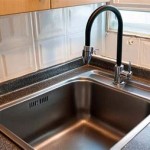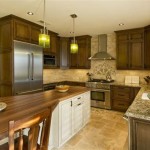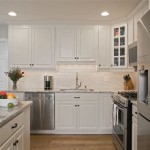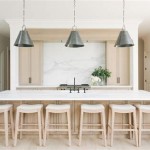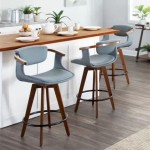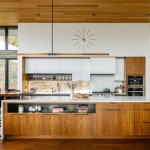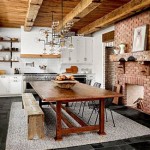Kitchen Island Designs With Sink: Functionality and Aesthetics Combined
The kitchen island has evolved from a simple countertop extension to a multifaceted hub in modern kitchen design. Integrating a sink into this island elevates its functionality, transforming it into a primary workstation for meal preparation, cleanup, and social interaction. Careful planning and design are crucial to ensure that a kitchen island with a sink complements the overall kitchen layout and aesthetic while maximizing its utility.
Optimizing Workflow and Functionality
One of the primary benefits of incorporating a sink into a kitchen island is the optimization of workflow. The kitchen work triangle, traditionally defined by the refrigerator, stove, and sink, can be effectively redesigned with the sink positioned on the island. This allows for a more fluid and efficient preparation process. Vegetables can be washed and prepped directly on the island, eliminating the need to transport them across the kitchen to a separate sink. This also facilitates simultaneous cooking and cleaning, allowing multiple individuals to work in the kitchen without interfering with each other's tasks.
Furthermore, the placement of a sink on the island can significantly improve the social aspect of the kitchen. While preparing food or cleaning up, the individual at the island can remain engaged in conversations with family or guests seated nearby. This encourages interaction and creates a more inclusive atmosphere, transforming the kitchen from a purely functional space into a gathering place. Island sinks are particularly advantageous for individuals who frequently entertain, as they provide a convenient space for preparing drinks and appetizers while remaining part of the social dynamic.
However, integrating a sink into a kitchen island requires careful consideration of plumbing and electrical requirements. Water supply lines and drainpipes must be routed to the island, which may necessitate modifications to the existing floor or subfloor. Electrical outlets are also essential for powering appliances such as garbage disposals or dishwashers that may be integrated into the island. It is advisable to consult with a qualified plumber and electrician to ensure that all necessary infrastructure is in place and complies with local building codes.
Design Considerations for Aesthetics and Space
The design of a kitchen island with a sink must harmonize with the overall aesthetic of the kitchen. The materials, finishes, and style of the island should complement the existing cabinetry, countertops, and backsplash. The size and shape of the island should be proportionate to the size of the kitchen, ensuring that it does not overwhelm the space or impede traffic flow. A well-designed island should enhance the visual appeal of the kitchen while providing functional workspace and storage.
The choice of sink is also a crucial design element. Undermount sinks are a popular option for kitchen islands, as they create a seamless transition between the countertop and the sink basin. This facilitates easy cleaning and provides a clean, modern aesthetic. Farmhouse sinks, with their exposed front apron, can add a touch of rustic charm to the kitchen. The size and depth of the sink should be appropriate for the intended use, whether it is for washing dishes, preparing food, or both. A double-bowl sink can be particularly useful for multitasking, allowing for simultaneous washing and rinsing.
Countertop materials for kitchen islands with sinks must be durable and water-resistant. Granite, quartz, and solid surface materials are all excellent choices, as they are non-porous and resistant to stains and scratches. The countertop should also have sufficient overhang around the sink to prevent water from dripping onto the cabinetry below. A raised edge or lip around the sink can further protect the island from water damage.
Storage is another important consideration in the design of a kitchen island with a sink. Cabinets, drawers, and open shelving can be incorporated into the island to provide ample storage for cookware, utensils, and other kitchen essentials. A dedicated space for storing cleaning supplies and dish soap near the sink is also a practical addition. Consider incorporating pull-out trash and recycling bins into the island to keep the area clean and organized. Seating options, such as bar stools or counter chairs, can be added to the island to create a casual dining or gathering space.
Material Selection and Practical Considerations
Choosing the right materials for a kitchen island with a sink is essential for ensuring its longevity and functionality. The selection process involves considering both the aesthetic appeal of the materials and their durability, resistance to water damage, and ease of maintenance. The combination of materials should complement the overall kitchen design while meeting the demands of a high-use area.
The cabinetry material plays a critical role in the island's durability and aesthetic. Solid wood is a classic choice, known for its strength and beauty. However, it requires proper sealing and maintenance to prevent water damage. Plywood with a veneer offers a more affordable option that still provides a solid base for cabinetry. Medium-density fiberboard (MDF) is another popular choice, particularly for painted cabinets, as it provides a smooth surface for paint application. Regardless of the material chosen, ensuring that the cabinetry is properly sealed and protected from moisture is crucial.
The hardware selected for the island, including faucets, handles, and knobs, should be both functional and visually appealing. Faucets should be chosen based on their design, ease of use, and water efficiency. Pull-down faucets with a sprayer are particularly useful for rinsing dishes and cleaning the sink. The handles and knobs should complement the cabinetry and countertop materials, adding a touch of personality to the island. Stainless steel and brushed nickel are popular choices for hardware, as they are durable and resistant to corrosion.
Adequate lighting above the kitchen island is crucial for both functionality and aesthetics. Pendant lights are a popular choice for island lighting, as they provide focused illumination over the workspace while adding a decorative element to the kitchen. Recessed lighting can also be used to provide ambient lighting in the area. The placement and brightness of the lighting should be carefully considered to ensure that the island is well-lit and visually appealing. Dimmable lights allow for adjusting the brightness according to the task at hand or the desired mood.

Kitchen Island Ideas Sizing Seating Appliances Much More
:max_bytes(150000):strip_icc()/Whitecabinetswithwhitecountertops41-97029e11844e4919ae20a575c8af5434.jpeg?strip=all)
27 Kitchen Island With Sink Ideas To Maximize Space And Functionality

Should You Put A Sink In Your Kitchen Island 7 Factors To Consider

Should You Put A Sink In Your Kitchen Island 7 Factors To Consider

47 Best Kitchen Island Ideas Stylish Unique Design Tips

Kitchen Island Trends Design Ideas For Kitchens With

90 Modern Kitchen Island Ideas To Transform Your Home In 2025

Create The Kitchen Sink Island Of Your Dreams Today Green Art
:strip_icc()/kitchen-island-with-sink-ideas-8-julia-robbs-91c93d0a20164cbea5690bf74420dd20.jpeg?strip=all)
26 Stunning Kitchen Islands That Boast A Built In Sink

30 Small Kitchen Island Ideas That Blend Style And Function

